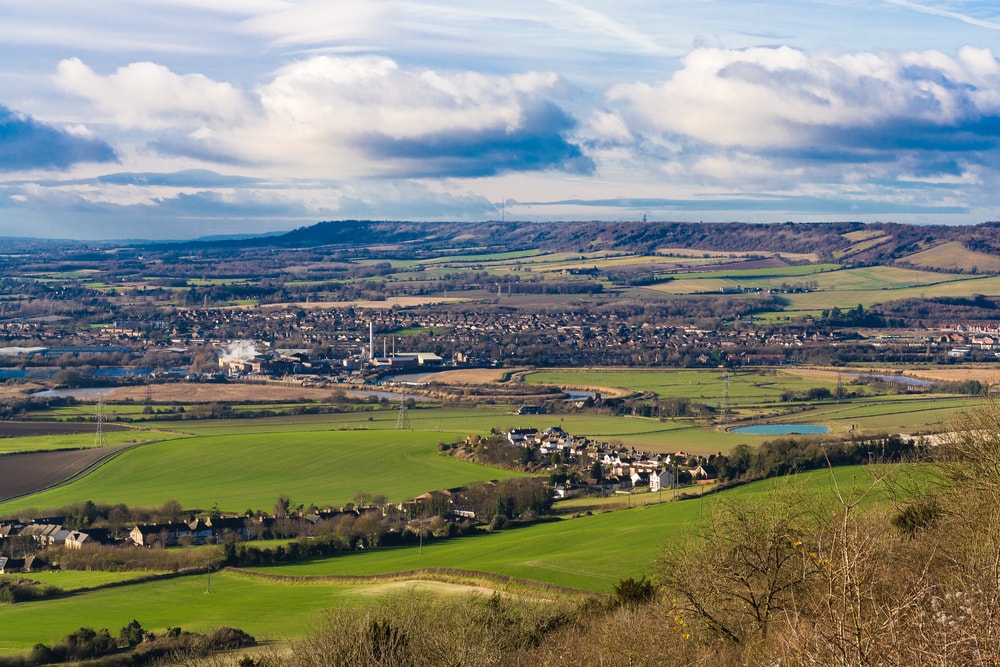Sector - Central Government
Utilising 1% of the green belt could deliver 738,000 new homes

Research by Lomond has revealed that Labour could deliver almost half of the 1.5 million new homes planned should it follow through with its plans to reclassify wrongly designated green belt land. In fact, the analysis by Lomond shows that just 1% of the current green belt could provide enough space for over 738,000 homes.
Lomond analysed current land usage looking at the total area of designated green belt land across England, before looking at how many homes could be delivered on just 1% of the current green belt and the added market value this would bring to the housing market.
Labour has pledged to take a brownfield-first approach to tackling the housing crisis when attempting to deliver its ambitious target of 1.5m new homes over the next five years. However, it has also pledged to create a grey belt which will see the reclassification of low-grade green belt land such as low environmental quality sites containing defunct agricultural buildings.
One such example of a grey belt site is a disused garage in Tottenham, which currently can’t be re-developed due to its designation as a green belt site, despite it being far from green.
England’s green belt covers an estimated 1,638,420 hectares, or 16.4bn square metres. This equates to almost 13% of England’s total land area with the majority of the green belt used for agriculture (65%) and forest, open land and water (19%), whilst 16% is already classified as developed use for infrastructure such as roads.
The average new home requires a land plot with an estimated size of 222 square metres, meaning that the entire green belt could facilitate the construction of 73.8m new homes.
The analysis by Lomond shows that utilising just 1% of the green belt that has been wrongly classified could deliver 738,027 new homes, putting Labour well on its way to achieving the 1.5m new homes promised.
With the average new-build home currently commanding £406,732, this would boost the value of the nation’s property market by almost £300.2bn, although it’s important to note that a percentage of any potential new homes delivered would be affordable as per the guidelines set out by the National Planning Policy Framework.
The South East is home to the largest green belt, accounting for 19% of the national total. Utilising just 1% would see some 137,514 new homes delivered to the region, the biggest housing stock boost of all regions.
The West Midlands would see the second largest influx of new housing stock at 119,149, with Yorkshire and the Humber (117,838), the North West (114,527) and East of England (105,401) also benefiting to the greatest extent.
London’s green belt accounts for just 2.1% of the total green belt in England, but even in the capital, utilising just 1% of it could deliver 15,662 new homes.
Lomond CEO, Ed Phillips, commented: “Building on the green belt is a contentious issue and quite rightly so, as nobody wants to see our green and pleasant land concreted over in order to build more housing.
However, that’s not what Labour is suggesting and the fact of the matter is that there is a great deal of green belt land that is wrongly classified and could be put to far better use.
The intention to address this issue by creating the grey belt is not before time and, as our research shows, utilising just 1% of this wrongly classified land could go a long way in addressing the housing crisis and delivering the homes needed to help ease the supply and demand imbalance.”
Data tables and sources
- Green belt and wider land statistics sourced from Gov UK – Local authority green belt statistics for England: 2022 to 2023
- Average new-build plot size requirement of 222 square metres sourced from the CPRE.
- Current new-build market values sourced from the Gov – UK House Price Index (May 2024 – latest available).
- View the full data tables and sources online here.
If you would like to read more stories like this, then please click here
Related Articles
More Central Government News
- Government Commits £7.3 Billion to Local Road Maintenance
12 Dec 25
The UK government has announced a significant £7.3 billion funding package for local road maintenance
- Government Earmarks Rail-Adjacent Land for Accelerated Housing Development
9 Dec 25
The UK government has announced a significant package of planning reforms designed to accelerate the
- New laws will strengthen cyber defences for essential public services
4 Dec 25
UK government has introduced the Cyber Security and Resilience Bill to Parliament.






